 Image 1 of 11
Image 1 of 11

 Image 2 of 11
Image 2 of 11

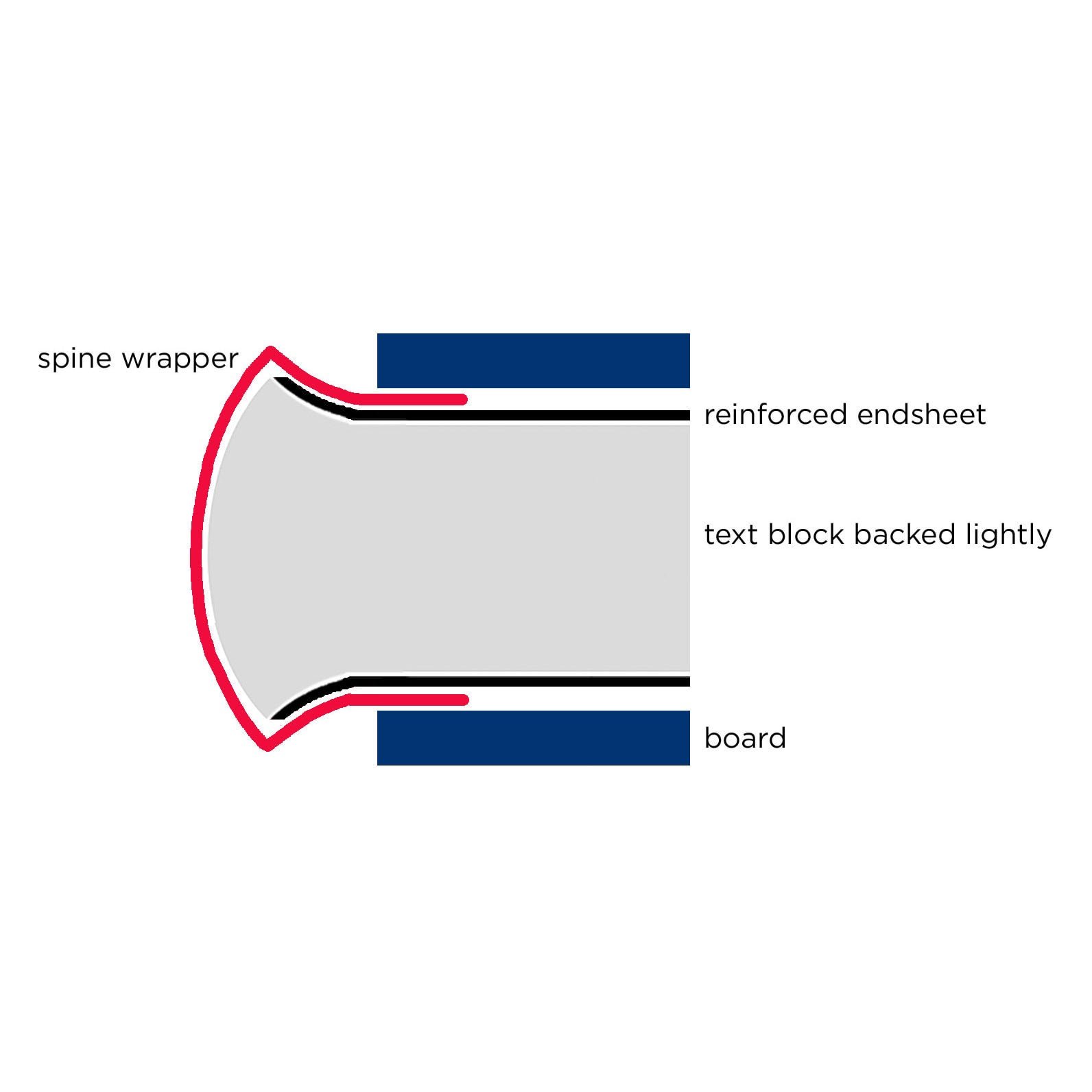 Image 3 of 11
Image 3 of 11

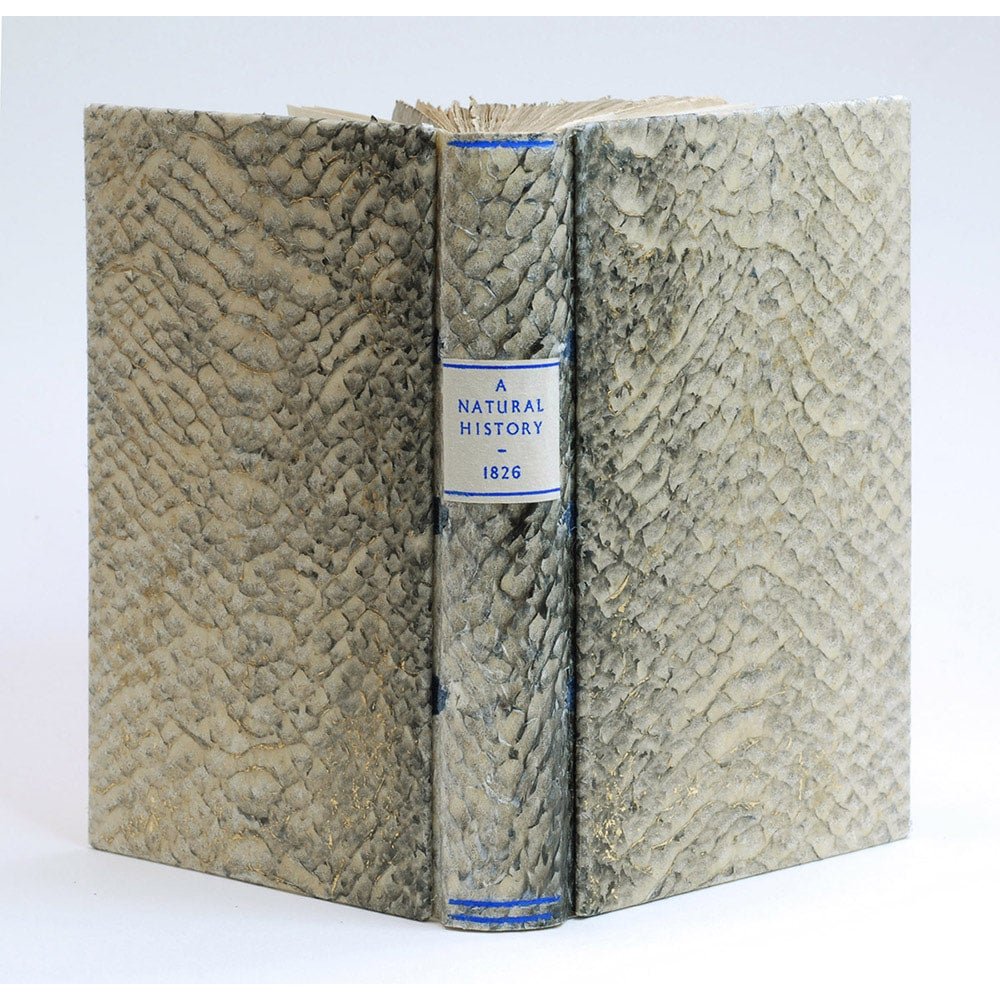 Image 4 of 11
Image 4 of 11

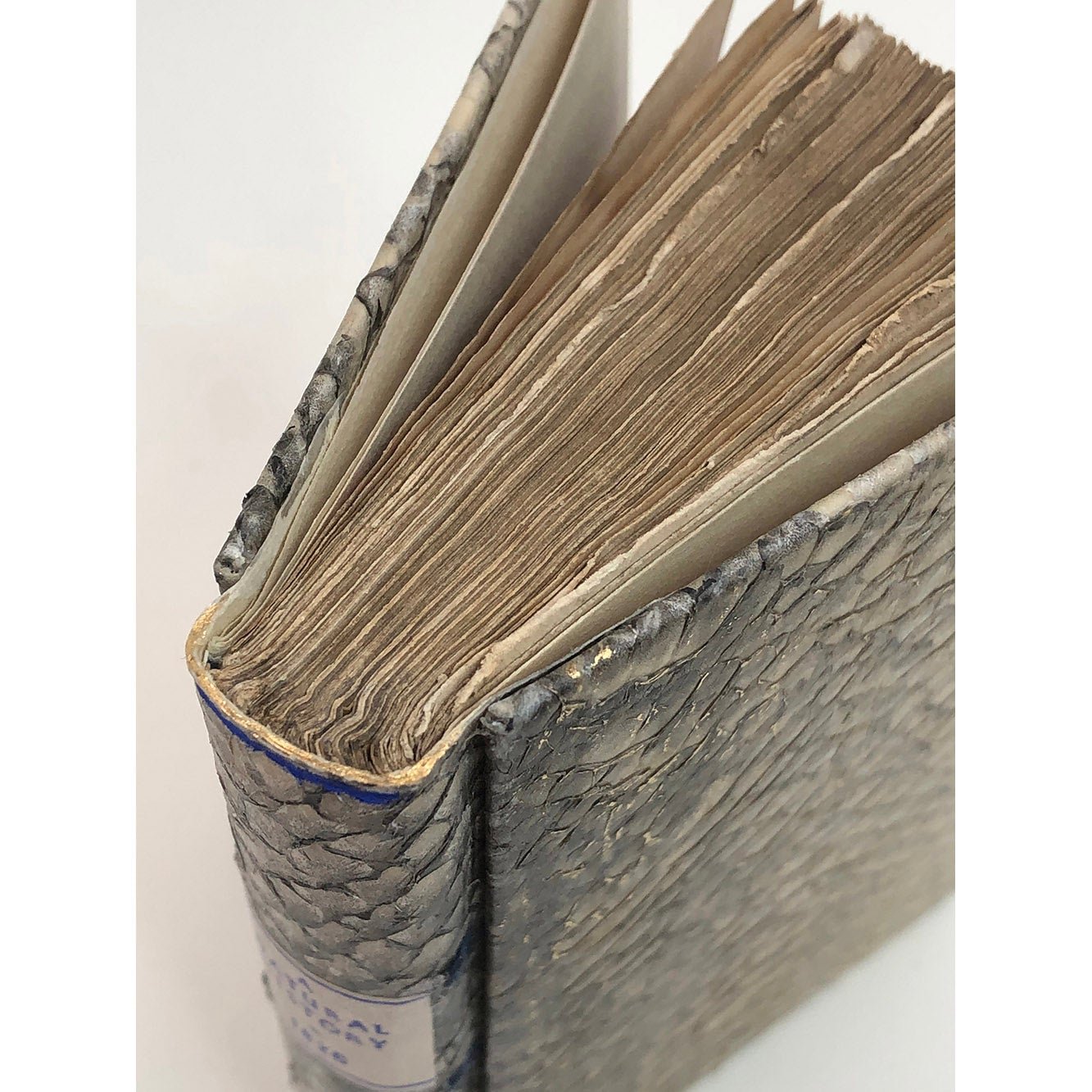 Image 5 of 11
Image 5 of 11

 Image 6 of 11
Image 6 of 11

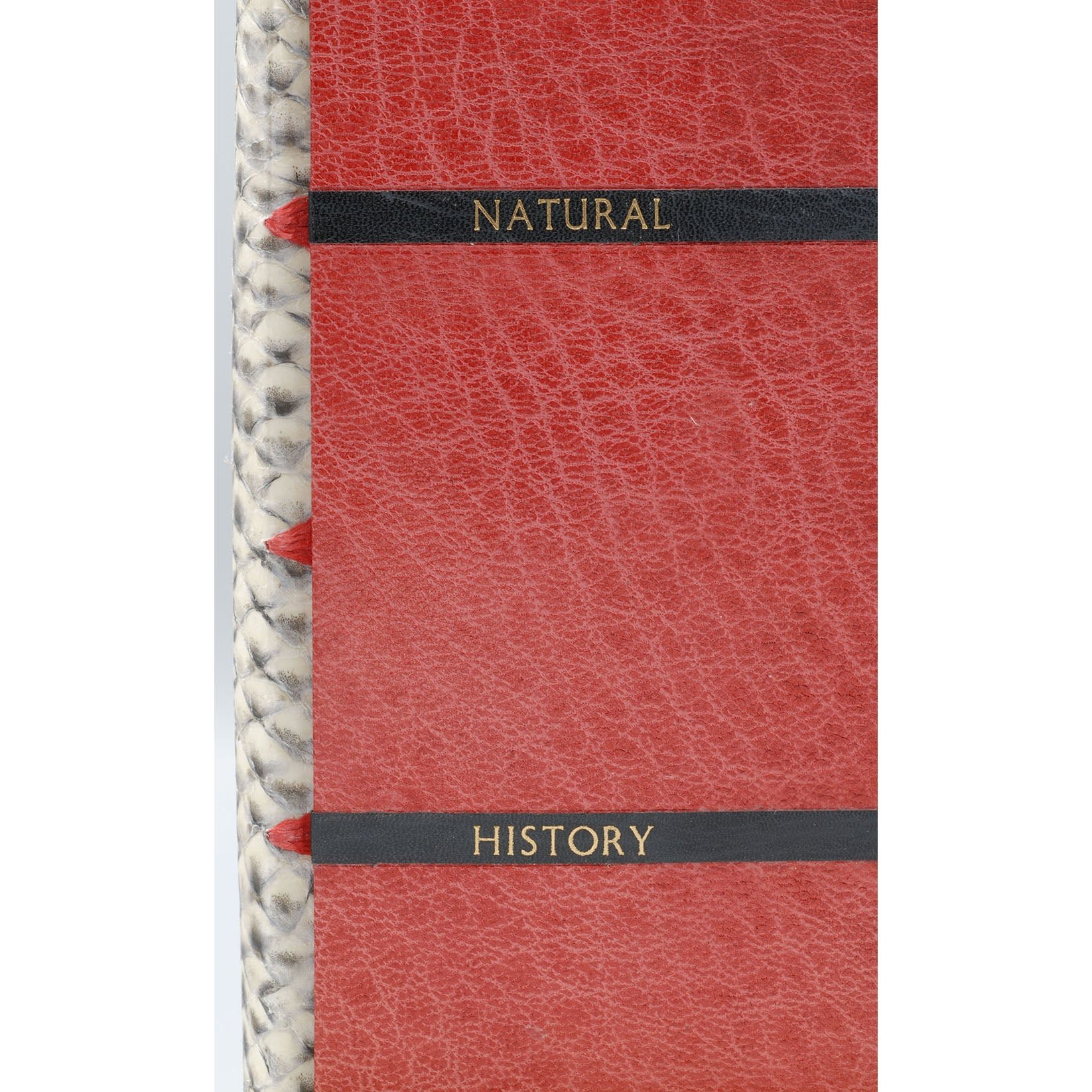 Image 7 of 11
Image 7 of 11

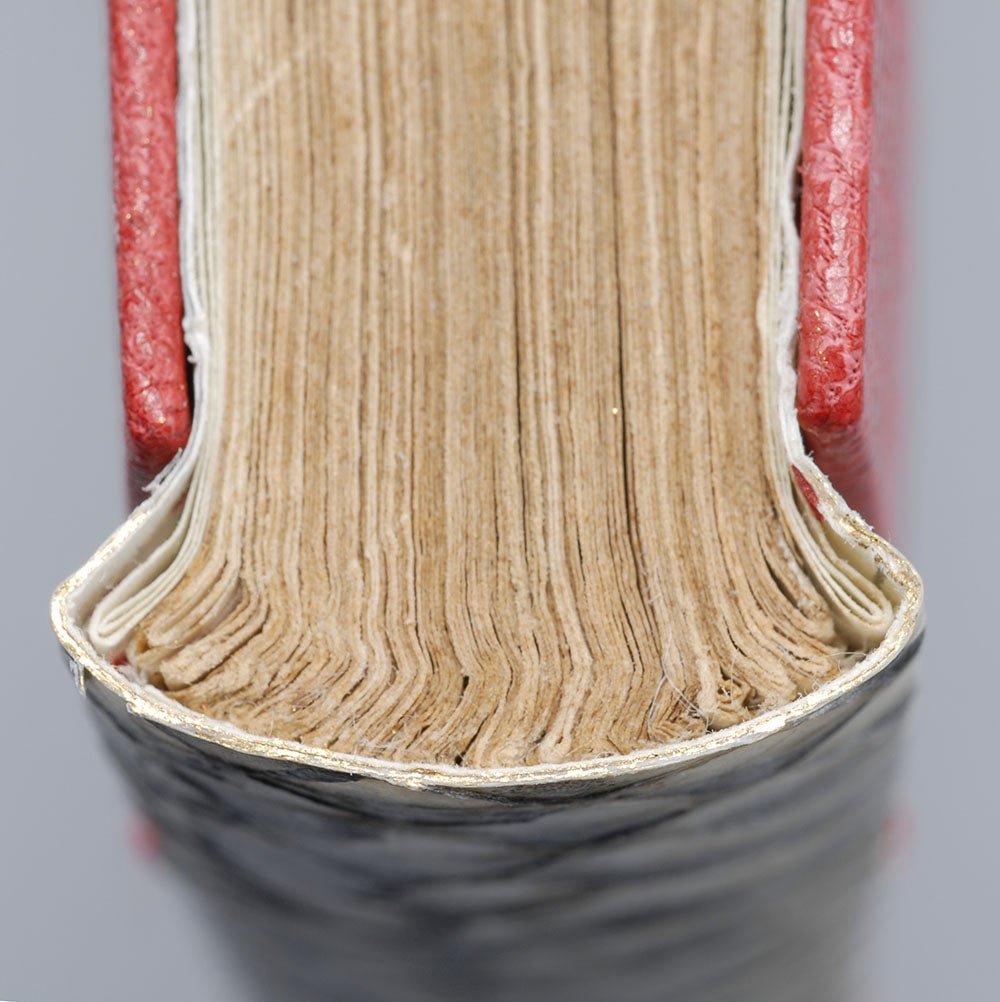 Image 8 of 11
Image 8 of 11

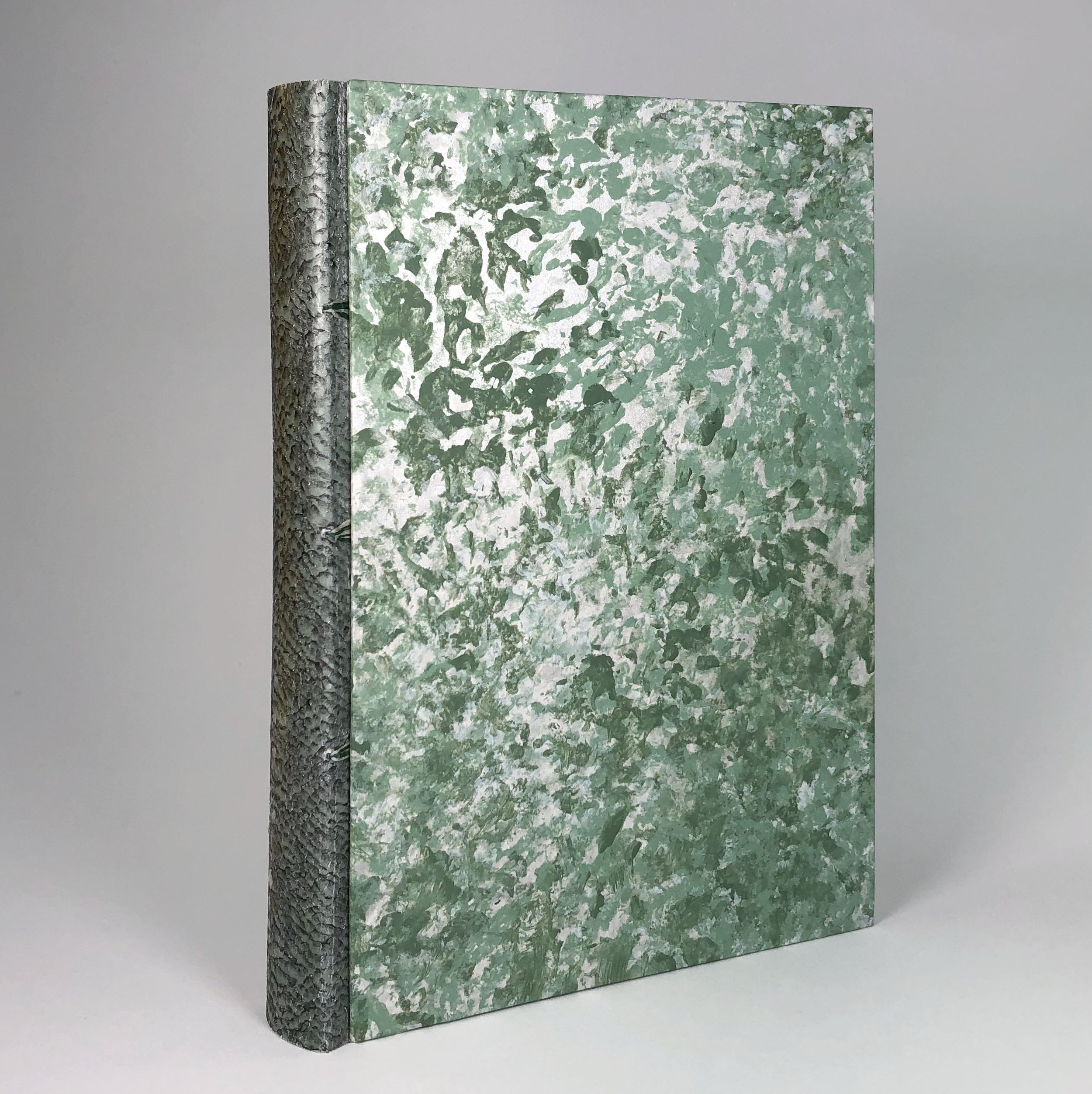 Image 9 of 11
Image 9 of 11

 Image 10 of 11
Image 10 of 11

 Image 11 of 11
Image 11 of 11












Even More Simplified Binding with fish parchment spine: models
Elegant and much leaner than the Simplified or Bradel bindings, the Even More Simplified Binding is stripped down to only the essential elements: boards glued onto the flange of a separate spine wrapper. Unique to this structure: the sewing supports lace through the spine wrapper to provide both an adhesive and a mechanical attachment to the text block. This structure was presented at the Guild of Book Workers Standards of Excellence in Hand Bookbinding Seminar in 2021. It is inspired by a binding by Jen Lindsay.
The spine wrapper is cut flush at the head and tail. The lacing ensures that the wrapper is crisply and evenly placed. There are no endbands. The boards can be laminated sheets of colored paper left uncovered; book board covered in leather, parchment, decorative paper, or book cloth; thin wood boards; or some experimental material. Joins between materials are neat but no more paring, sanding, lining, or infilling need be done than is necessary for the book to function. This leaves the structure of the completed book easily discernible.
It might be tempting to think of this binding in terms of the features and tasks omitted. But it would be a mistake to view the Even More Simplified as merely a time-saving option. Including only the features that are structurally necessary imbues the binding with an austere elegance comparable to that found in International Style architecture. In addition, every operation must be executed with the greatest care, as the structure’s minimalist nature calls attention to details that may otherwise be overlooked.
This workshop handout is a guide to creating an Even More Simplified binding with boards covered in decorative paper or book cloth. It also includes instructions for processing parchment from raw fish skins. However, fish parchment need not be used for the spine, the procedure outlined will work equally well with split leather, book cloth, or handmade paper.
These models were made as demos while teaching a bookbinding workshop. They may include marks or notes made to aid students. Colors and patterns will vary. Cutaway bindings revealing structural features are sometimes available.
Workshop handout not included with model but available separately here: Twenty-page workshop handout with bibliography. Includes material not available in the eight-page handout distributed to attendees of the 2021 Guild of Book Workers Standards of Excellence in Hand Bookbinding Seminar, including tool and supply list and many optional techniques. Please note this handout was written not to replace but to supplement an in-person workshop.
Elegant and much leaner than the Simplified or Bradel bindings, the Even More Simplified Binding is stripped down to only the essential elements: boards glued onto the flange of a separate spine wrapper. Unique to this structure: the sewing supports lace through the spine wrapper to provide both an adhesive and a mechanical attachment to the text block. This structure was presented at the Guild of Book Workers Standards of Excellence in Hand Bookbinding Seminar in 2021. It is inspired by a binding by Jen Lindsay.
The spine wrapper is cut flush at the head and tail. The lacing ensures that the wrapper is crisply and evenly placed. There are no endbands. The boards can be laminated sheets of colored paper left uncovered; book board covered in leather, parchment, decorative paper, or book cloth; thin wood boards; or some experimental material. Joins between materials are neat but no more paring, sanding, lining, or infilling need be done than is necessary for the book to function. This leaves the structure of the completed book easily discernible.
It might be tempting to think of this binding in terms of the features and tasks omitted. But it would be a mistake to view the Even More Simplified as merely a time-saving option. Including only the features that are structurally necessary imbues the binding with an austere elegance comparable to that found in International Style architecture. In addition, every operation must be executed with the greatest care, as the structure’s minimalist nature calls attention to details that may otherwise be overlooked.
This workshop handout is a guide to creating an Even More Simplified binding with boards covered in decorative paper or book cloth. It also includes instructions for processing parchment from raw fish skins. However, fish parchment need not be used for the spine, the procedure outlined will work equally well with split leather, book cloth, or handmade paper.
These models were made as demos while teaching a bookbinding workshop. They may include marks or notes made to aid students. Colors and patterns will vary. Cutaway bindings revealing structural features are sometimes available.
Workshop handout not included with model but available separately here: Twenty-page workshop handout with bibliography. Includes material not available in the eight-page handout distributed to attendees of the 2021 Guild of Book Workers Standards of Excellence in Hand Bookbinding Seminar, including tool and supply list and many optional techniques. Please note this handout was written not to replace but to supplement an in-person workshop.
Elegant and much leaner than the Simplified or Bradel bindings, the Even More Simplified Binding is stripped down to only the essential elements: boards glued onto the flange of a separate spine wrapper. Unique to this structure: the sewing supports lace through the spine wrapper to provide both an adhesive and a mechanical attachment to the text block. This structure was presented at the Guild of Book Workers Standards of Excellence in Hand Bookbinding Seminar in 2021. It is inspired by a binding by Jen Lindsay.
The spine wrapper is cut flush at the head and tail. The lacing ensures that the wrapper is crisply and evenly placed. There are no endbands. The boards can be laminated sheets of colored paper left uncovered; book board covered in leather, parchment, decorative paper, or book cloth; thin wood boards; or some experimental material. Joins between materials are neat but no more paring, sanding, lining, or infilling need be done than is necessary for the book to function. This leaves the structure of the completed book easily discernible.
It might be tempting to think of this binding in terms of the features and tasks omitted. But it would be a mistake to view the Even More Simplified as merely a time-saving option. Including only the features that are structurally necessary imbues the binding with an austere elegance comparable to that found in International Style architecture. In addition, every operation must be executed with the greatest care, as the structure’s minimalist nature calls attention to details that may otherwise be overlooked.
This workshop handout is a guide to creating an Even More Simplified binding with boards covered in decorative paper or book cloth. It also includes instructions for processing parchment from raw fish skins. However, fish parchment need not be used for the spine, the procedure outlined will work equally well with split leather, book cloth, or handmade paper.
These models were made as demos while teaching a bookbinding workshop. They may include marks or notes made to aid students. Colors and patterns will vary. Cutaway bindings revealing structural features are sometimes available.
Workshop handout not included with model but available separately here: Twenty-page workshop handout with bibliography. Includes material not available in the eight-page handout distributed to attendees of the 2021 Guild of Book Workers Standards of Excellence in Hand Bookbinding Seminar, including tool and supply list and many optional techniques. Please note this handout was written not to replace but to supplement an in-person workshop.
